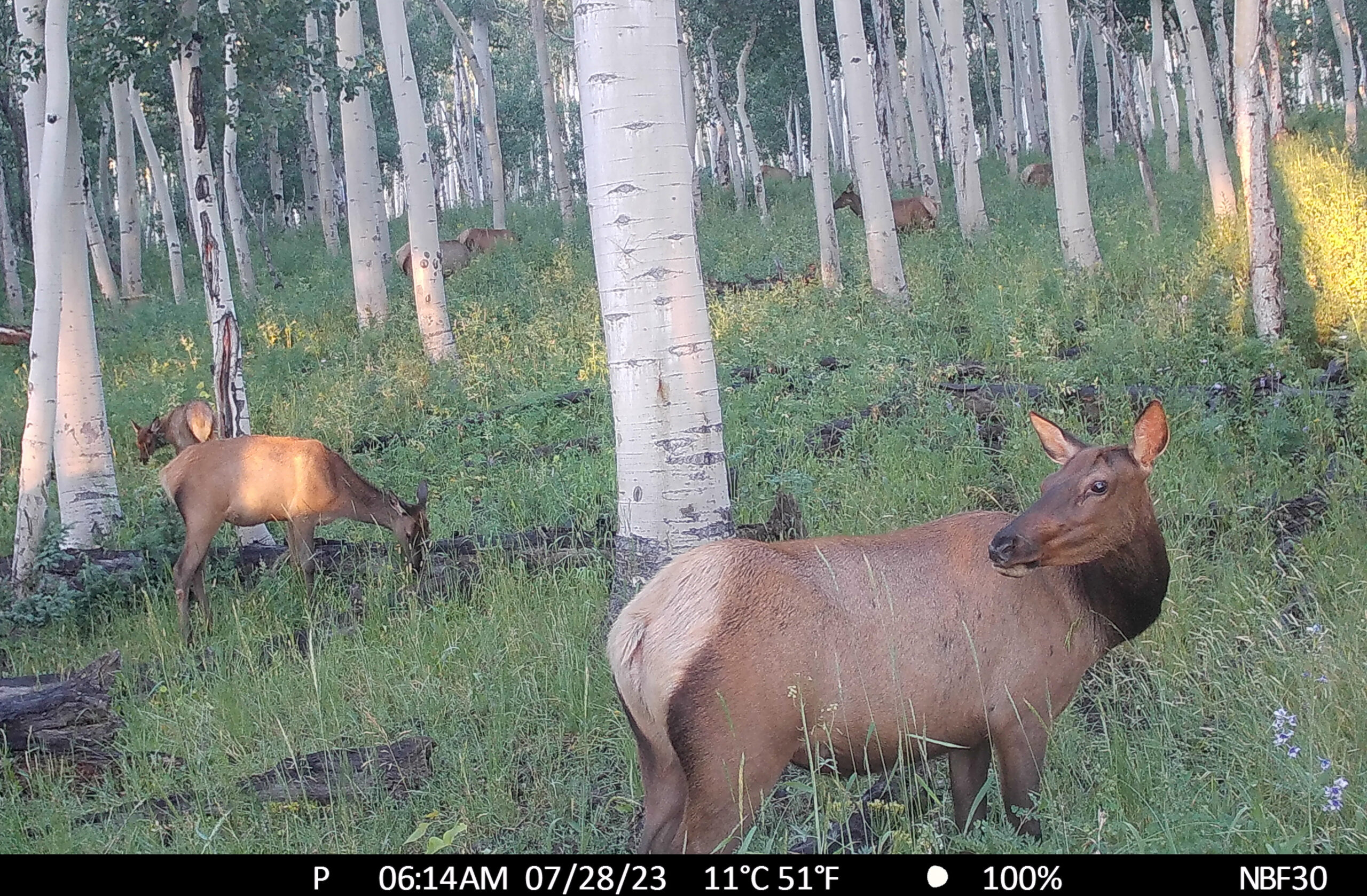
Sign in
Sign in to save favorite properties and equipment, save your search parameters and more
Don’t have an account yet? Sign Up Now
Sign up
Already have an account? Login Now


Sign in
Sign in to save favorite properties and equipment, save your search parameters and more
Don’t have an account yet? Sign Up Now
Sign up
Already have an account? Login Now
Scouting and glassing for this year’s hunt can be thrilling – catching a glimpse of the trophies that might be waiting there as the season nears. Adding some additional eyes to the effort, including late in the evening and at night when some animals become particularly active, can help your odds even more. Trail cams are providing this kind of visibility, and gaining popularity because of it. Those are only a few of the benefits of setting up trail cams.
Trail cams are discreet cameras people position throughout property – and sometimes on public lands – to get a complete picture of animal activity. These types of cameras are triggered by a motion sensor, capturing pictures as the animal moves through the field of vision. They range from relatively basic, taking pictures that are stored on a secure digital card and retrieved later, to much more high tech. REVEAL’s Cellular Cameras fall into the latter category, offering a mobile app that sends trail cam images to your device in real-time.
While the technology continues to get better and better, the strategy behind mounting and positioning trail cams is also important to consider. Three Hayden Outdoors recreational real estate experts recently chimed in on how they use trail cams for hunting, safety, and general wildlife management. As lifelong hunting guides and outdoor enthusiasts, Shad Sheldon, Heath Thompson, and Lonnie Gustin provided a brief master class in proper trail cam management. Hailing from the Plains, the South, and the Rocky Mountain West respectively, their insight spans a variety of purposes and touches nearly every corner of the country.

Make sure to see how long a camera’s battery lasts.
This piece detects both heat and motion, then triggers the camera.
The small lights allows for night-vision pictures.
Make sure yours can stand up to the elements in your area.
Choose a camera you can easily install
Modern trail cameras fall into two categories: cellular and non-cellular. Each has their benefits. Non-cellular cameras don’t allow for real-time viewing, but they are typically less expensive. Alternatively, cellular cameras allow you to keep an eye on animals without having to retrieve camera chips or disturb the area.
Shad Sheldon has been hunting since he was 7, and bagged his first deer at 10. He started bow hunting in his late teens, a passion ever since. He and his wife ran a hunting lodge in Goodland, KS until about 10 years ago, when they turned to Hayden Outdoors to help them sell it. Not long after he joined Hayden as an agent, specializing in hunting properties and farmland.
These days, Shad and his wife spend their time in eastern Kansas, as close to the land and its rhythms as possible. He relies on trail cams for a variety of reasons, both personally and professionally when he’s helping clients list their land. We asked what he looks for in a good trail camera.
“I like good resolution and good pictures with true color. Most cameras will fire right away; you won’t get a lot of blurry moments. I like to put great pictures on our website to help clients sell property. And of course, it needs to be easy-to-use.”
Before you throw down a good chunk of change – trail cams can range from $50 – $600 – it’s good to know what you want to accomplish with your equipment. Talk with your local dealer about the features of the camera. Some important things to think about are:
Heath Thompson grew up on a farm in Georgia, and has a degree in Forestry. He’s been in the business a long time, hunting, guiding, and managing land. These days, Heath’s family owns 1,500 acres, row crops, and grows hay. He has a history in agricultural, hunting, timber, recreational, and farmland with Hayden Outdoors in the Southeast. He understands the importance of the perfect hunting property like no one else.
When it comes to trail cams, Heath doesn’t mess around. “I worry about additional scents on my cameras, so I’ll hang them outside at my house in the yard for a while to get the correct smell. When I go to place them on the property, I’ll wear rubber boots and gloves.”
How many cameras you hang depends on the size of the land, your objective, and your budget. Heath offers these tips on trail cam height. “I hang mine three feet from the ground to the bottom of the camera to get a full view of the animal. I also keep the sun’s direction in mind, pointing cameras northeast or northwest to avoid over exposure.”
Look closely for nearby plants that might trigger the camera. There’s nothing worse than hoping for a great shot of that Boone-and-Crockett buck only to get hundreds of pictures of grain or a branch.

You might be using trail cams for hunting, or just to get an inside view of the wildlife. Lonnie Gustin is familiar with both. He’s been hunting and wandering the mountains of the West his whole life, but is quick to tell you he’s never been an outfitter. “I always said I liked hunting too much to be a guide.” Nowadays, he hunts with his boys along the Rocky Mountain Front throughout Wyoming and Colorado. He calls 4,000 acres along the Western Slope of Colorado and Wyoming home, and joined Hayden Outdoors “back in the day,” about 13 years ago. If you’re looking to buy or sell a farm, hunting property, or ranch land in the area, Lonnie is your guy.
He uses trail cams all the time, most commonly placing them near water sources where he might catch a glimpse of big game – typically elk or mule deer in his neck of the woods. And sometimes, a camera will capture something else – another big Western predator making its way across the land. Trail cams are an excellent way to learn more about the wildlife in the area. Bears, wolves, lynx, mountain lions, coyotes, fowl, and varmints – trail cams paint broad strokes of the wildlife living on your land. For Lonnie and others, trail cams also offer a unique way to understand the local wildlife population – how and where animals are moving; which water sources they rely on; and how land use shifts from one season to the next.
While trail cams can certainly enhance the hunting experience, Heath gives fair warning, “The worst thing you can do is look at trail cams. It’ll make you sick; big buck after big buck you might never see again.” And while he’s right – some of the biggest racks don’t make it onto the wall – having trail cams on the property can help you prepare.
He adds, “We use trail cams for animal counts. We count every deer we see. It lets us know what’s on the property.” Lonnie counts on trail cams for knowing the time of day animals are coming in. And Shad likes to use them to learn more about what comes after hunting season. “After last rifle season was over, we had about three to four 150-class bucks show up. We saw new deer move in.” Heath notes trail cams aren’t just for big game. “They’re great for turkey hunting, too. Trail cams let me see where the turkeys are, because down here, turkeys don’t gobble a lot. So we’re using trail cams to see where they’re traveling in and out.”

Hayden Outdoors real estate agents are known for showcasing every aspect of a property when it comes to selling it, and cutting-edge cellular trail cams are a big part of the strategy. Shad sums it up this way: “The bigger bucks I pull off the property, the more it’s going to go for. The more good pictures I have of those bucks, the more money we can bring in.”
Lonnie agrees, “Trail cams are pretty damn important when I’m selling land. They let me prove the wildlife moving on the property. If I can actually show people some background and some shots and they can see where that huge elk was, it’s an important selling point.”
Heath goes so far as to compile entire albums for the properties he represents. “You need to have proof, and you can’t get it in just a week. Property trail cam capture takes a long time. Having historical timestamps on a lot of photos adds a lot more value than just having one good buck on a single trail cam shot.”
In addition to buying and selling, trail cams add additional value to the property by aiding in pest control and property security. Placing trail cams at a property entrance or lesser known access point is a great way to see if people are wandering in when they shouldn’t be.
Setting up trail cams on your property offers a variety of benefits, including:
Adding a trail cam system to your land can help bolster its value over time. It’s also an excellent way to learn the ins, outs, and animals who call your acres theirs, too. Chat with your local sporting goods dealer about the best setup for your land, or upgrade to trail cams that let you know which four-legged creatures are cruising though as soon as they’ve crossed the camera’s lens.